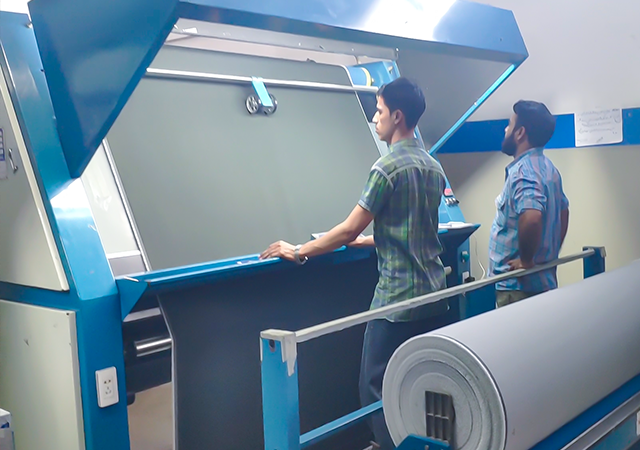China's integration into the World Trade Organization (WTO) has forged closer ties between domestic textile manufacturers and international brand clothing retailers. However, this has also given rise to an increase in quality issues and disputes concerning clothing fabrics. The provision of precise and dependable data for clothing fabric inspection has become intricately linked to the fate of the textile industry, and its role in enhancing global competitiveness cannot be understated. To effectively navigate the competitive landscape of the textile, printing, and dyeing sectors within the WTO framework, the utilization of fabric inspection machinery has become imperative. These machines serve to record cloth defects and quantities accurately and promptly, thereby furnishing customers with comprehensive cloth inspection reports.
In the past, manual cloth inspection was limited to detecting around 200 defects within an hour, with attention spans lasting a maximum of 20-30 minutes. Beyond this timeframe, fatigue would set in, hampering the inspection speed to a mere 5-20 meters per minute. However, the advent of automated fabric inspection machines has revolutionized this process by replacing manual labor. These machines autonomously examine and grade cloth, identify and mark defects, and even handle cutting tasks. Their functioning relies on the principles of light source reflection and guidance, enabling them to operate at a normal inspection speed of up to 120 meters per minute. Controlled through terminal systems, these machines display detected defects on screens, boasting both speed and simplicity. They excel at accommodating high-frequency or rarely occurring new defects, while also possessing memory capabilities to process a larger number of defects. Furthermore, these automatic fabric inspection machines are adept at fabric classification and maintaining a statistical memory of inspected fabric defects.
Operating a fabric inspection machine involves providing the necessary hardware environment for inspection, incrementally spreading the fabric, and ensuring adequate illumination. Operators visually scrutinize the fabric to identify surface defects and color variations. A proficient fabric inspection machine comes equipped with electronic defect inspection devices, which, when combined with computer-based statistical analysis, assist in inspection operations and yield printable results.
Key components of a fabric inspection machine include:
- Fabric unwinding, dragging, and rewinding mechanisms
- Fabric inspection table, light source, and lighting components
- Coding apparatus
- Fabric finishing setup
- Initiating, reversing, and braking systems
An exemplar of such technology is the SUNTECH Fabric Inspection Machine ST-WFIM , which can be complemented by an optional data collection and analysis system employing a 4-point methodology. This machine accommodates a wide array of woven materials in rolled form, effectively inspecting fabrics from plait/loose formats to rolls, with diverse inlet and outlet options. Despite being priced according to Chinese standards, its quality is upheld at a high standard.

Main Functions of ST-WFIM
1. End of Fabric Roll Automatic Stop Sensor - for Next Roll Joining
The automatic stop sensor at the end of fabric roll allows continuous fabric inspection for easy next roll joining;
2. Full Width Fabric Inspection
With the aid of different visions and optional lightning set, with 30 degree fixed angle inspection screen design, the fabric can be inspected in full width accurately;
3.Accurate Fabric Length & Fabric Edge Controlling
The industrial standard measuring system and the digital readouts give consistent fabric roll assessments for fabric roll length and weight can be taken by, the edge alignment photo-sensor also achieves a perfect roll generation;
4.Consistent Roll Output
It has function of twin rewinding roller and roll hardness adjustment. Processed rolls are rewound with the correct amount of tension and are consistent from roll to roll;
5.Versatile Fabric Input and Output-Optional
Optional systems are available for different fabric input and output presentations, roll to roll, continuous fabric input, etc;
6. Selvedge Shifting Device - Optional
ST-WFIM is an ideal machine for thick/sulzer selvedges;
7. Data Collection and Analysis System (4-point System) - Optional
100% fabric inspection with software for accurate fabric roll analysis and printout;
8. Linear Fabric Roll End Cutter - Optional
Full width cutting at the end of processed roll, fast and accurate.




